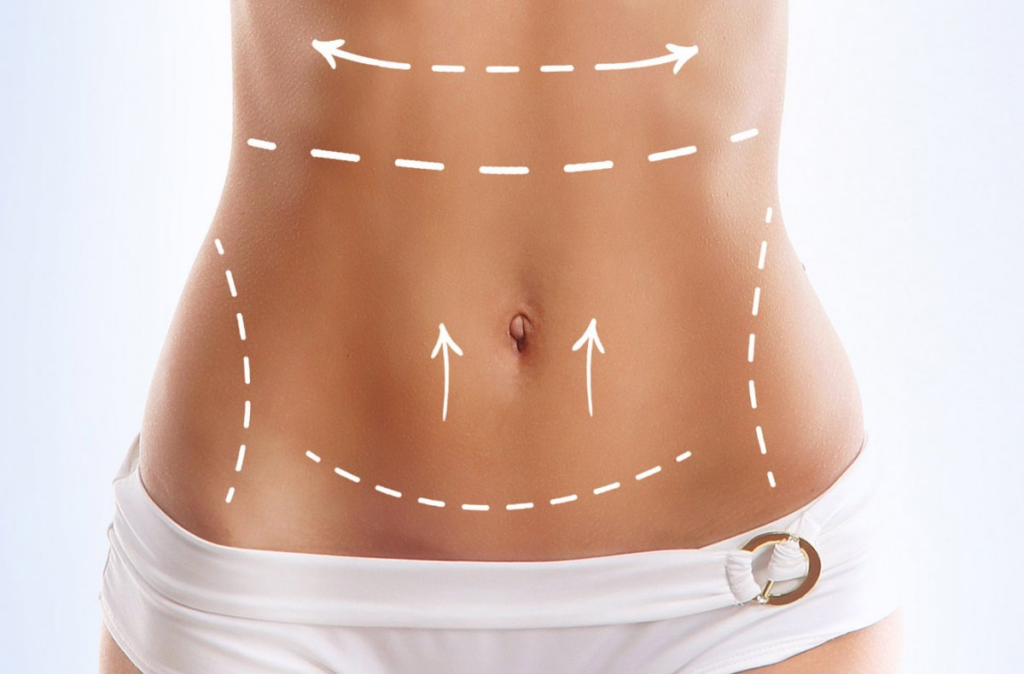Abdominoplasty, commonly known as a tummy tuck, is a popular cosmetic procedure. While Turkey has emerged as a destination for medical tourism, prospective patients often inquire about the safety and efficacy of undergoing this procedure there. This article addresses key aspects of tummy tuck safety in Turkey, focusing on pre-operative considerations, surgical techniques, post-operative care, and potential risks.
Table of Contents
Pre-Operative Considerations in Turkey
The safety of a tummy tuck in Turkey begins long before the incision. A thorough pre-operative assessment is crucial. This involves a detailed medical history review, including any pre-existing conditions like diabetes or cardiovascular disease, which can significantly impact surgical risk. Patients should undergo comprehensive blood work and potentially cardiac evaluations to ensure they are fit for anesthesia. Realistic expectations regarding the procedure’s outcome are paramount; open communication with the surgeon about achievable results is essential. Finally, choosing a board-certified plastic surgeon with demonstrable experience in abdominoplasty is non-negotiable. Selecting a clinic with appropriate accreditation and sterile facilities is equally vital.
The selection of the surgeon is the most critical aspect. Verify the surgeon’s qualifications and experience through reputable sources, not just clinic websites. Look for evidence of board certification and membership in relevant professional organizations. Review before-and-after photos to assess their surgical skill and aesthetic judgment. A consultation should involve a detailed discussion of the procedure, including the type of tummy tuck (mini, full, extended), incision placement, and expected recovery time. Don’t hesitate to ask detailed questions and seek clarification on any uncertainties. Transparency and open communication are hallmarks of a reputable practice.
Pre-operative imaging, such as ultrasound or CT scans, may be necessary to assess abdominal wall anatomy and identify potential complications. This allows the surgeon to tailor the surgical plan to the individual patient’s needs and minimize risks. Furthermore, patients should be informed about the potential need for additional procedures, such as liposuction, to achieve optimal results. This planning should be transparent and discussed in detail during the consultation. Finally, patients should be well-informed about the risks and benefits of the procedure and should sign informed consent forms only after fully understanding the information provided.
The language barrier can pose a challenge. Ensure clear communication channels are established with your surgeon and their team. Consider bringing a translator or using a reputable translation service to avoid misunderstandings. Thorough documentation of the entire process, including pre-operative assessments, surgical plans, and post-operative instructions, is crucial, especially when dealing with international medical tourism. This documentation serves as a valuable resource during the recovery process and should be kept readily accessible.

Surgical Techniques & Safety Standards
Surgical techniques for abdominoplasty in Turkey should adhere to international best practices. The procedure typically involves removing excess skin and fat, tightening abdominal muscles, and repositioning the umbilicus (belly button). The choice of surgical technique (open or minimally invasive) depends on the patient’s individual anatomy and the surgeon’s expertise. Regardless of the technique, meticulous surgical precision is essential to minimize complications such as bleeding, infection, and seroma formation. The use of appropriate surgical instruments and materials is also critical.
Adherence to strict sterile protocols throughout the procedure is paramount. The surgical environment should be meticulously cleaned and disinfected to prevent infection. The surgeon and surgical team should follow proper infection control measures, including the use of sterile gowns, gloves, and instruments. Proper anesthesia management is also crucial. A qualified anesthesiologist should be present throughout the procedure to monitor the patient’s vital signs and ensure patient safety. Post-operative pain management strategies should also be discussed pre-operatively.
Safety standards in Turkish clinics vary. It’s crucial to verify that the clinic adheres to international accreditation standards, such as those set by the Joint Commission International (JCI) or similar organizations. These organizations provide independent assessments of healthcare facilities, ensuring they meet rigorous quality and safety standards. Checking for these accreditations is a vital step in verifying the safety and hygiene of the surgical environment. Thorough investigation of the clinic’s facilities, including operating rooms, recovery areas, and post-operative care units, should be conducted before committing to the procedure.
The use of advanced surgical techniques, such as minimally invasive approaches or robotic-assisted surgery, can potentially reduce the risk of complications and improve patient outcomes. However, the availability and utilization of these techniques may vary across different clinics in Turkey. Inquire about the surgeon’s experience with these advanced techniques and whether they are appropriate for your individual case. The surgeon should be able to clearly explain the benefits and risks associated with each technique and provide a rationale for their chosen approach.

Post-Operative Care & Recovery
Post-operative care is a critical phase in ensuring a safe and successful tummy tuck outcome. This includes pain management, wound care, and monitoring for potential complications. Patients should receive clear and detailed instructions regarding medication, dressing changes, and activity restrictions. Regular follow-up appointments are essential to monitor healing progress and address any concerns. The post-operative period typically involves wearing a compression garment to minimize swelling and support the abdominal wall.
Patients should be advised to avoid strenuous activities and heavy lifting during the initial recovery period. This helps prevent complications and promotes proper healing. Adequate rest and proper nutrition are crucial for optimal recovery. Patients should follow a balanced diet and stay well-hydrated to support the body’s healing process. Early mobilization and gentle exercise, as recommended by the surgeon, are encouraged to prevent complications like blood clots and promote healing.
Potential complications, such as infection, seroma formation (fluid accumulation), or hematoma (blood clot), should be promptly addressed. Patients should be aware of the signs and symptoms of these complications and know when to seek immediate medical attention. The surgeon should provide clear instructions on how to contact them in case of any emergencies or concerns. Regular follow-up appointments allow for early detection and management of any potential issues, minimizing the risk of long-term complications.
The duration of recovery varies depending on the extent of the surgery and the individual patient’s healing capacity. Patients should be prepared for several weeks of recovery time, with gradual return to normal activities over several months. The surgeon should provide realistic expectations regarding the recovery timeline and any potential limitations on physical activity. Open communication between the patient and the surgical team is crucial throughout the recovery process to ensure a smooth and successful outcome.
Potential Risks & Complications
Like any surgical procedure, abdominoplasty carries inherent risks and potential complications. These can include bleeding, infection, seroma formation (fluid accumulation under the skin), hematoma (blood clot), wound dehiscence (wound separation), and nerve damage. The risk of these complications can vary depending on factors such as the patient’s overall health, the surgical technique employed, and the surgeon’s experience. Open communication with the surgeon about these risks is essential before making a decision.
Scarring is an inevitable outcome of abdominoplasty. While surgeons strive to minimize scarring through meticulous surgical techniques, some degree of scarring is always present. The appearance of scars can vary depending on individual healing characteristics and skin type. Patients should be realistic about the potential for scarring and understand that the scars may fade over time but will not completely disappear. The location and extent of scarring should be discussed with the surgeon during the pre-operative consultation.
Deep vein thrombosis (DVT) and pulmonary embolism (PE) are potential, albeit rare, complications associated with major surgery. These conditions involve blood clots that can be life-threatening. Risk factors for DVT and PE include prolonged immobility and obesity. Preventive measures, such as the use of compression stockings and early mobilization, are often implemented to minimize these risks. Patients should be aware of the signs and symptoms of DVT and PE and seek immediate medical attention if they experience any concerning symptoms.
Fat necrosis (death of fat cells) and skin necrosis (death of skin tissue) are rare but serious complications that can occur after abdominoplasty. These complications can result in unsightly skin irregularities or require further surgical intervention. The risk of these complications can be minimized by careful surgical technique and proper post-operative care. Patients should be aware of these potential risks and discuss them with their surgeon to understand the likelihood and potential management strategies.
While Turkey offers potentially lower costs for abdominoplasty, the safety of the procedure depends heavily on careful pre-operative planning, selection of a qualified and experienced surgeon, adherence to strict surgical protocols, and diligent post-operative care. Thorough research and due diligence are crucial for ensuring a safe and successful outcome. Prioritizing safety should always outweigh cost considerations when making decisions about elective surgery.
Transform Your Confidence with Surgyteam!
Join the thousands of satisfied patients who have experienced the exceptional care and expertise of Surgyteam’s renowned plastic surgeons. Whether you’re seeking aesthetic enhancements or reconstructive surgery, our dedicated team in Antalya is here to provide you with the highest quality treatment and personalized care.



